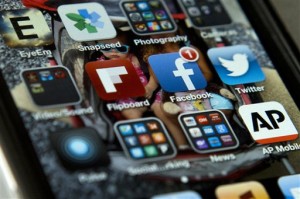
While living with my grandparents over the summer, I truly understood and saw firsthand how generations are vastly different when it comes to gathering news. Like clockwork, my nanny and pop would have the news on at 7 a.m., noon and 6 p.m., and never deviated from their routine. Television, newspapers and radio were their main ways of getting information throughout most of their life. This was their norm. However nowadays, as a society, we are used to being bombarded with information everywhere we turn.
As Matthew Ingram said, with the increased popularity of Facebook and Twitter, news can be found anywhere at anytime. Although there are pros and cons to having a constant stream of information, it is hard to tell if it is a good or bad thing.
Similar to Whitney Houston’s death mentioned in Ingram’s article, the news of Robin Williams was reported on twitter far earlier than when it was announced on television. However there were also reports mixed in that said Williams was alive, which made it hard to figure out which source to trust. The need to break the news first has led to more mistakes, but that is the risk journalists take in order to compete in the fast paced industry.
Although I find the idea of constant information helpful at times, as most of us are too busy to sit down and watch the news, sometimes consumers don’t remember the importance of a story because of the rapid way we receive this information and news.
Brian Stelter’s comparison of our news culture to a firework is perfect. We really do see news as “individual bursts of light that appear out of nowhere and disappear just as fast.”
We don’t have time to appreciate or reflect on the information that is given to us, which I find scary. There needs to be a balance so the information is disseminated quickly and accurately but is also long-lasting.